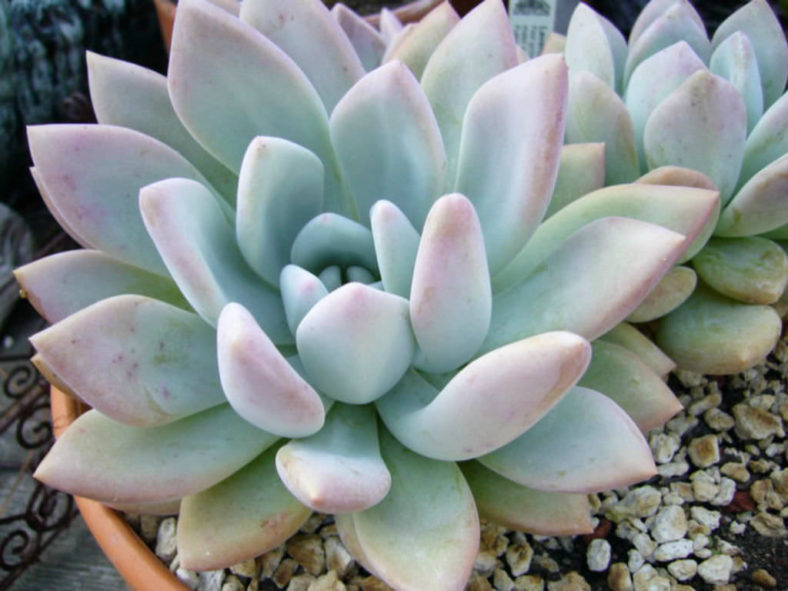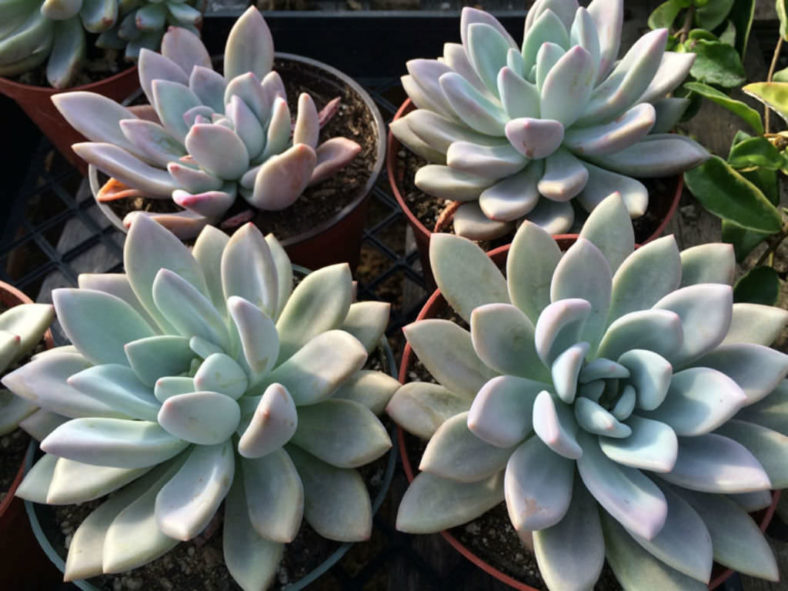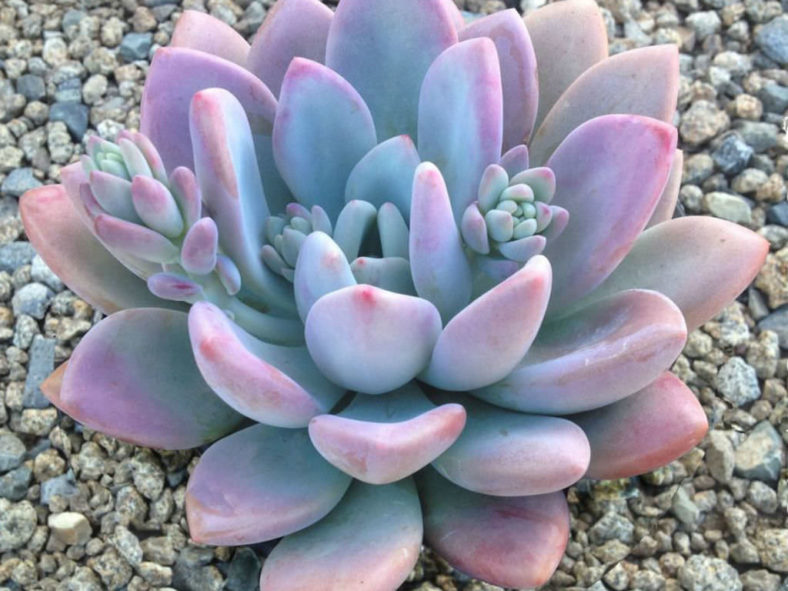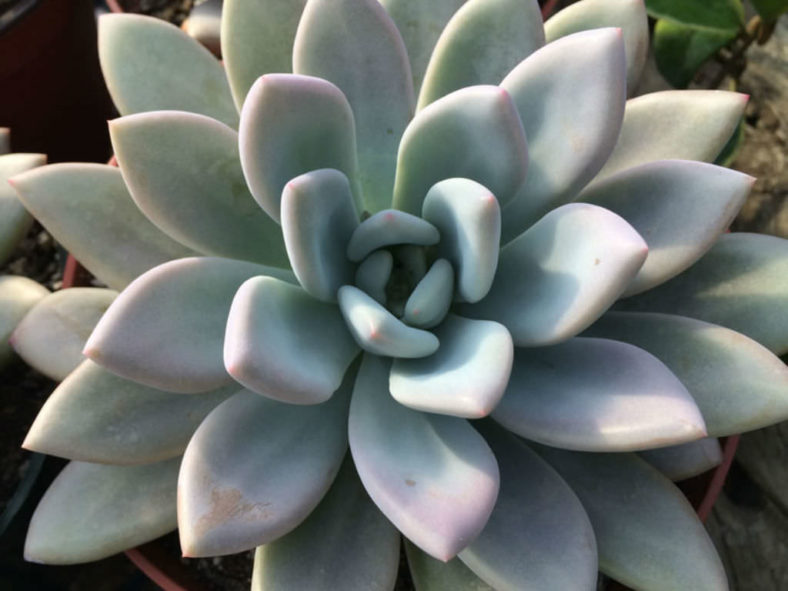Scientific Name
×Graptoveria 'Opalina'
Scientific Classification
Family: Crassulaceae
Subfamily: Sempervivoideae
Tribe: Sedeae
Nothogenus: ×Graptoveria
Origin
×Graptoveria 'Opalina' is a hybrid that results from a cross between Graptopetalum amethystinum and Echeveria colorata. It was created by Robert Grim, a succulent enthusiast and breeder from California, United States. The name was first published in the Cactus and Succulent Journal in 1988.
Description
×Graptoveria 'Opalina' is a lovely succulent that forms compact, short-stemmed rosettes of pale blue-green leaves with a hint of pink tones on the tips and margins when grown in full sun, reminiscent of the shifting colors of opals. The rosettes can grow up to 6 inches (15 cm) in diameter and produce offsets at the base, forming a compact clump over time. The leaves are fleshy, smooth, somewhat upright, and have a thick, waxy coating, giving them a powdery finish.
In late spring, ×Graptoveria 'Opalina' produces slender, branched inflorescences that bear clusters of yellow flowers with a pink hue.

Hardiness
USDA hardiness zone 10a to 11b: from 30 °F (−1.1 °C) to 50 °F (+10 °C).
How to Grow and Care
The rules for caring for Graptopetalum are similar to those for most succulents. Container-bound plants thrive in a mixture of peat, sand, or other grit, topsoil, and compost. Full sun is the best situation, but they will grow in partial sun with slightly rangy results.
Graptopetalums need excellent drainage and moderate water. You can tell when to water by sticking your finger in the soil. Water if the soil is dry several inches down, or the fleshy leaves look shriveled. Overwatering causes root rot, and the plant can also attract several pest infestations.
Graptopetalums are generally easily propagated by seeds, leaf cuttings, or offsets. Any rosette that breaks off has the potential to root and start a new plant. Even a leaf that drops off will quickly root below the parent plant and produce a new rosette. The new plant feeds off the leaf until it shrivels and falls off. The new little ghost plant had rooted and sprouted new leaves by then.
See more at How to Grow and Care for Graptopetalum.
Forms
Links
- Back to nothogenus ×Graptoveria
- Succupedia: Browse succulents by Scientific Name, Common Name, Genus, Family, USDA Hardiness Zone, Origin, or cacti by Genus
Photo Gallery
Click on a photo to see a larger version.


